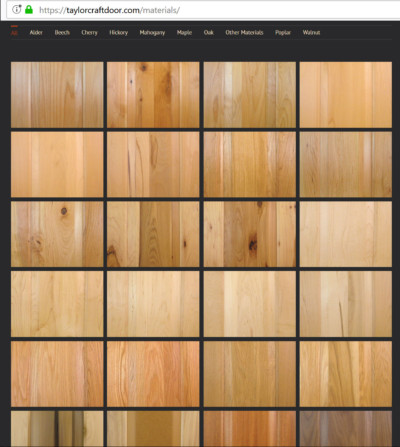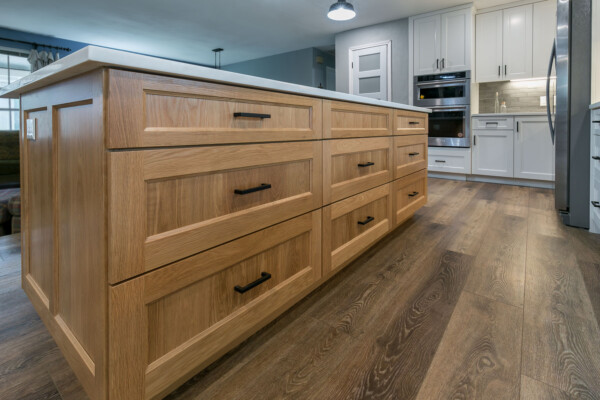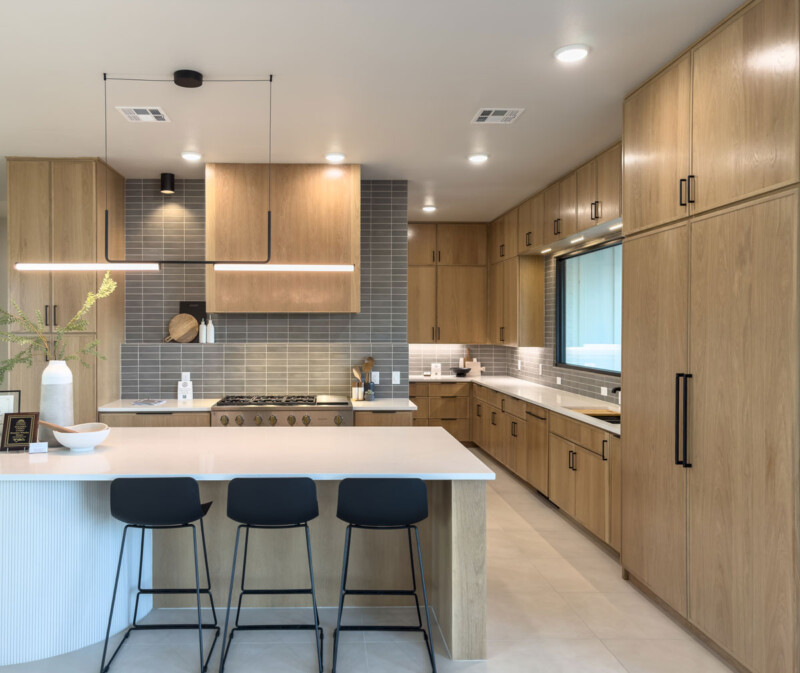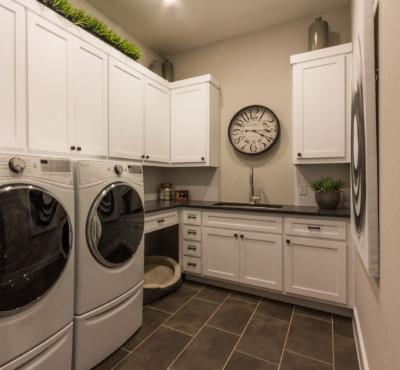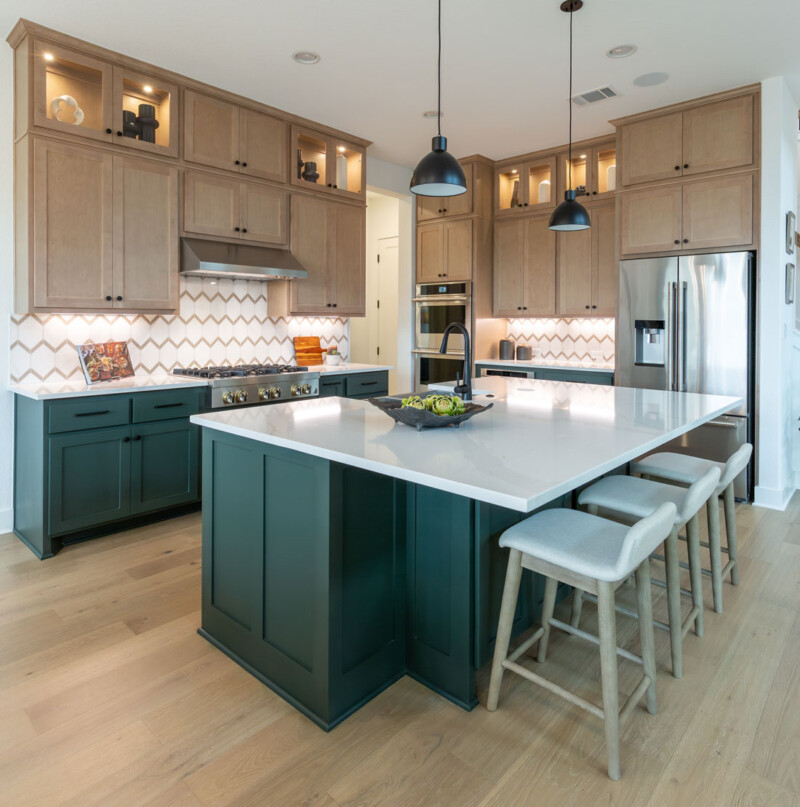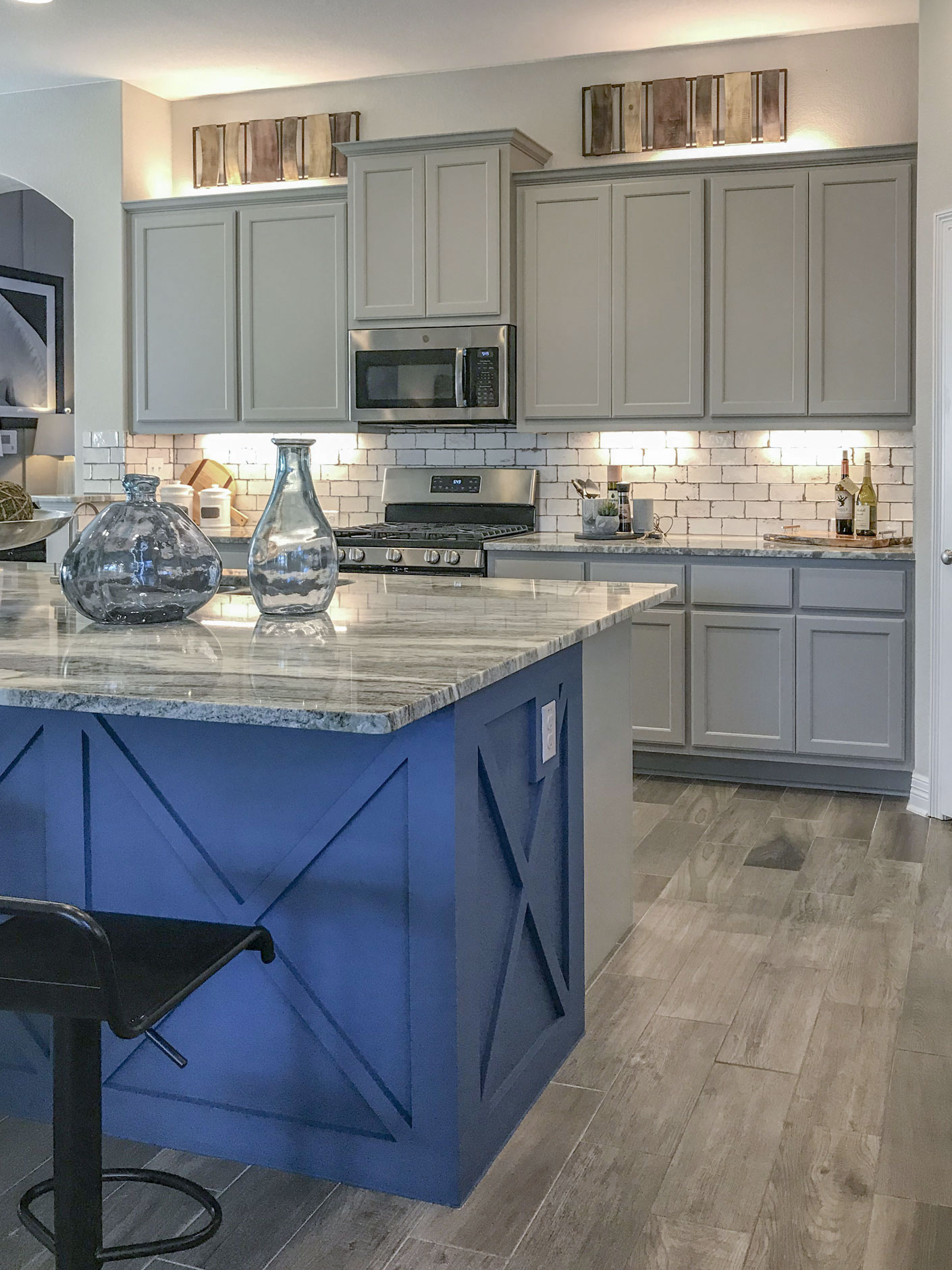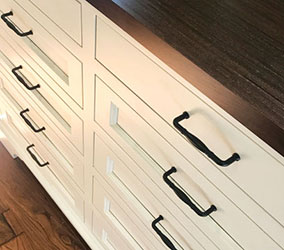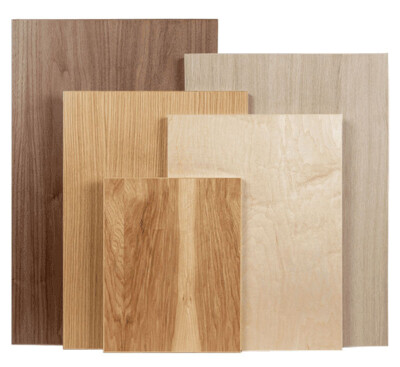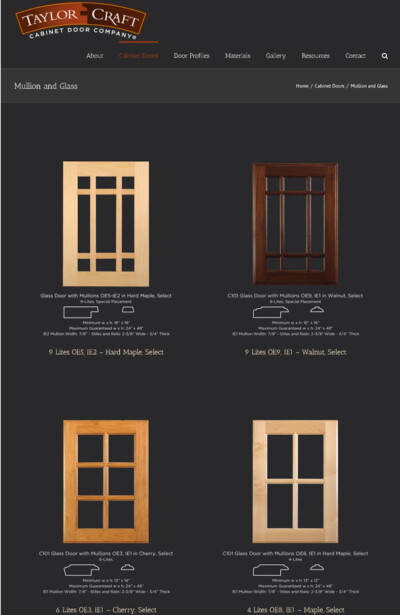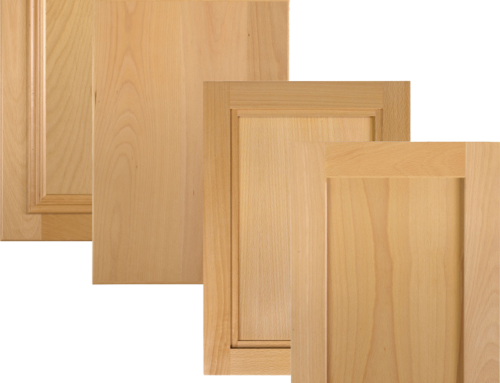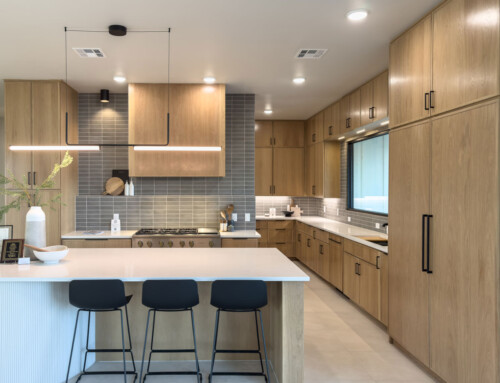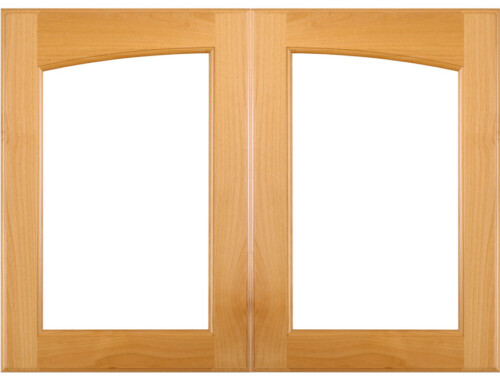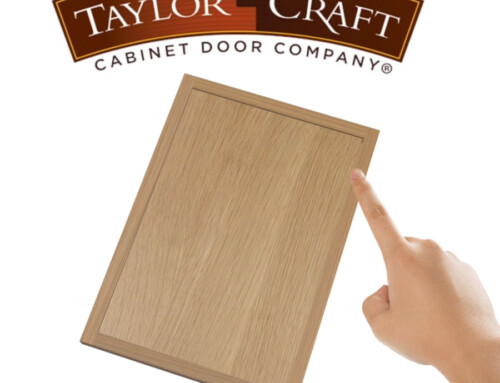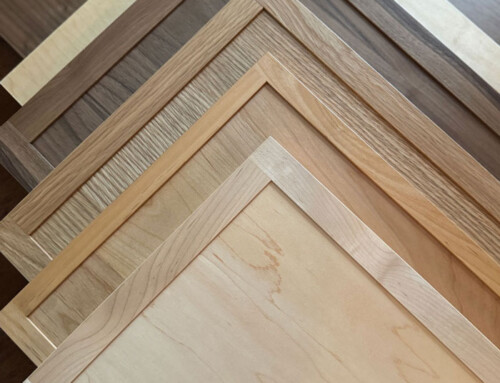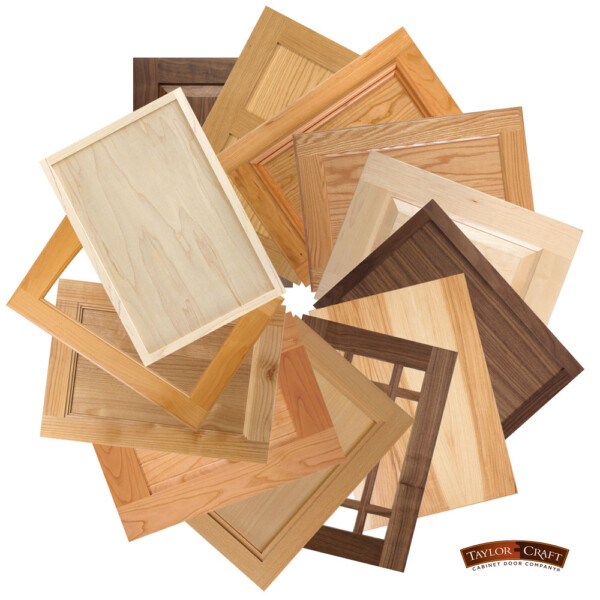 Picking a cabinet door style and material is a major decision! The door design and material create a foundation for a room’s interior design and can represent an investment of tens of thousands of dollars. Cabinets typically remain in a home for generations and are a major factor in home value and how quickly a home sells. Most buyers spend hours researching options and deciding on a door design that strikes the perfect balance between personal taste and something universally appealing.
Picking a cabinet door style and material is a major decision! The door design and material create a foundation for a room’s interior design and can represent an investment of tens of thousands of dollars. Cabinets typically remain in a home for generations and are a major factor in home value and how quickly a home sells. Most buyers spend hours researching options and deciding on a door design that strikes the perfect balance between personal taste and something universally appealing.
We’ve worked in the cabinet industry for several decades and have seen trends come and go, national and regional preferences, which door designs are timeless, and which materials stand up well to daily use. We used this experience and knowledge to create our Cabinet Door Buyers Guide detailing top considerations when picking a cabinet door style and material.
What material do you prefer visually and what characteristics do you need in your material?
Wood characteristics to consider include wood hardness (see TaylorCraft’s Wood Hardness Rating Scale), grain pattern, stain absorption qualities, color (when the wood is new and as it ages over time as some wood color, cherry and walnut particularly, changes when aged) and stability (tendency to expand/contract, warp or split).
Color, Grain Pattern and Ability to Accept Finish: Some wood species such as red oak have heavy, distinctive grain patterns and are very porous and accept stain readily. Some species such as maple vary in density and can accept stain unevenly if not prepped properly with wood sealers, conditioners, etc. Others such as white oak are tight-grained, smooth, and dense.
Some wood species such as hickory vary widely in color from light blond to dark brown within each board. Each type of wood accepts stain differently so be sure to research the specific type of wood you’re interested in and view stain samples on the wood species you choose, for a true representation of the finished product.
Density and Durability: Cabinet door materials vary from extremely hard woods that are so durable they’re used for things like bowling alley floors and baseball bats (hickory, hard maple and white oak) to woods that are still considered hardwood but don’t have the same density and dent resistant qualities, and are prized more for their color and grain (cedar, pine, vertical grain fir), to materials that fall somewhere in between (alder, walnut, beech). Before selecting a material be sure to consider the durability needs depending on where your cabinets will be installed, which brings us to our next question…
Where are your cabinets going?
Outdoor Cabinets: If you’re installing outdoor cabinets, weather resistant material such as teak, bamboo or stainless steel, and a door profile that is easy to clean, without a lot of nooks, crannies and ornamentation that collects dirt will be major considerations. If cabinets are going into a temperature and humidity controlled environment the material choices are much broader.
Indoor Cabinets: Even inside a home, consideration should be given to durability of material in high use areas. Relatively soft woods like Western Red Cedar and Eastern White Pine should not be installed in high traffic areas because they are easily dented and scratched, unless you want a distressed appearance.
Humidity and Paint Grade Material Considerations: If you want painted cabinets in your bathroom, laundry room or other room with significant humidity changes, consideration should be given to material stability. Wood expands and contracts with changes in temperature and humidity and some wood is affected more than others. When expansion and contraction occurs, cracks can appear in the paint where the panel meets the frame and where the frame parts are joined together.
Many of our customers who plan to paint their doors prefer an MDF panel because MDF is a composite material and doesn’t easily expand and contract, paired with a paint-grade maple or poplar frame for their painted doors.
What is the overall look you’re going for and what is the style of the home?
While an eclectic look, mixing materials and designs, can be appealing, some styles tend to mix better than others. If your overall look is modern, an ornate, applied moulding cabinet door style may look out of place.
TaylorCraft Cabinet Door Company has a complete cabinet door style guide with descriptions and examples of cabinet doors and cabinet photos for each style including modern, traditional, transitional, shaker, Mediterranean, Victorian, southwestern, rustic, tropical and more. Define your overall interior style and use that as the basis for your cabinet selection for a cohesive look.
Is the design and color trendy or timeless? (this may only matter to you if you plan to sell your home soon)
Trends in interior design have cycles similar to the fashion industry, however trends in interior design change much more slowly due to the higher price point. View our article on which materials and styles are trendy and which cabinet styles and colors are believed to be timeless and another article on which cabinet door styles and materials are expected never to come back into popularity. Read the articles for more information, but for a quick summary, white paint, simple design (eg: shaker style) and solid, natural wood cabinets and cabinet doors will always have a place at the table.
Which Cabinet and Cabinet Door Construction Type Do You Prefer?
Cabinet construction options inlcude frameless, faceframe and flush inset. Faceframe construction with a solid wood frame on the front of a cabinet box, with the frame showing behind the cabinet doors tends to look more traditional.
Frameless cabinets can look more modern because they are a more seamless look with less cabinet frame showing behind the doors. Flush inset cabinets (shown below) can be an indicator of high quality construction due to very tight tolerances between the cabinet frame and cabinet door or drawer front.
Depending on the door style and material, frameless and flush inset can also be a versatile, perfect fit for transitional or even traditional rooms. For complete descriptions and photos of cabinet construction options visit our cabinet construction options page.
Cabinet door design options include cabinet door thickness and stile and rail width. TaylorCraft Cabinet Door Company’s standard door thickness is 3/4″ which provides a substantial, sturdy look and feel without being unnecessarily heavy and bulky. TaylorCraft’s standard Cope and Stick door style and rail width options are 2-3/8″ and 3-1/8″ wide, with a 1-5/8″ reduced rail height option for small 5-piece drawer fronts. Our 4S cabinet doors are available in 3/4″ and 1″ Shaker styles.
Cabinet door detail is determined by the outside edge, inside edge and panel profiles. Some companies allow you to pick and choose between options to create your own design and others have pre-defined door designs. TaylorCraft customers mix and match profiles to create their own unique cabinet door designs. We have put together photos of cabinet doors built using our most popular profile combinations on our Cabinet Doors page.
View TaylorCraft Cabinet Door Company’s cabinet door profile options page to view available profiles.
Cabinet door construction options include the way the door frame (or lack thereof) is constructed. Cope and stick, modern slab veneer, applied molding, mullion and TaylorCraft’s proprietary 4S cabinet doors are detailed below.
On Cope and Stick doors the door stiles (vertical frame parts) and rails (horizontal frame parts) meet at a 90 degree angle, and the frame detail is created using inside edge and outside edge profiles, which vary from square, Shaker inside and outside edge to beveled, rounded, waterfall, step-bullnose, etc details. View TaylorCraft’s cope and stick profile options here.
4S Cabinet doors feature a proprietary construction technique that ensures superior durability and stability over time. 4S doors are available exclusively from TaylorCraft Cabinet Door Company.
Key features that set the TaylorCrafted 4S cabinet door apart from other doors on the market:
- No lip moulds, no miter joint construction
- True 3/4″ door thickness
- Seamless, smooth, jointless back
- Real wood – in the white
- Works with standard hardware and hinges for 3/4″ thickness doors
- 90 degree joints which create a stable, durable frame
- No nails, nail holes or fasteners that create hinge placement concerns
- True craftsmanship
Modern slab doors are made up of veneered hardwood over a dense, MDF core for stability, with outside edges edgebanded with 0.5mm and 3mm thick veneer tape to cover the raw MDF edge. Solid wood slab doors are less common due to potential stability and warpage issues and are made up of solid pieces of lumber glued side by side horizontally or vertically. Because of the lack of a supporting frame, solid wood slab doors are prone to warping and twisting so manufacturers willing to make them add battens on the back of the door. Battens are typically two or more pieces of lumber screwed into the back of the door, horizontally, perpendicular to the wood on the face of the door, for stability.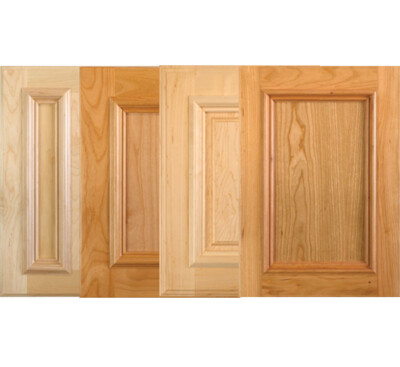 Applied Molding Cabinet Doors feature decorative molding applied to the inside edge of the door frame, or the face of the door for extra detail and a more 3-dimensional end product.
Applied Molding Cabinet Doors feature decorative molding applied to the inside edge of the door frame, or the face of the door for extra detail and a more 3-dimensional end product.
Mullion (Divided Lite) Cabinet Doors are made with horizontal and vertical mullions in place of a solid panel to allow visibility to cabinet contents and provide decorative detail. Clear glass inserts are typically installed behind the mullions to keep dust out of cabinets. Sometimes decorative seeded, swirled, frosted or colored glass is used to give a period look, decorative touch or to obscure cabinet contents.
Cabinet Doors cut for Glass Panels are created using a cabinet door frame only with the back of the frame rabbeted with a ledge to accept a glass panel, allowing complete visibility to items displayed in the cabinet. Many people add interior lighting to their glass-door cabinets to display vases and other decorative collections.
Mitered cabinet doors are built with stiles and rails meeting at a 45 degree angle at the corners. Mitered door construction allows the frame detail to flow all the way around the door so a more detailed frame can be created. Because of the precision required to make frame detail match up at all 4 corners, mitered cabinet doors can be more expensive than cope and stick. Mitered cabinet doors can be created with a blind mortise and tenon joint where you can’t see the type of joinery at the corner, or other mitered construction methods where the tongue and groove are visible at the corners.
Mitered cabinet doors are not typically used in applications where there are significant humidity fluctuations or heavy impact such as entry or passage doors due to the potential for mitered joints to open. TaylorCraft does not currently offer mitered cabinet doors as we believe our Cope and Stick and 4S doors are a superior cabinet door construction choice.


